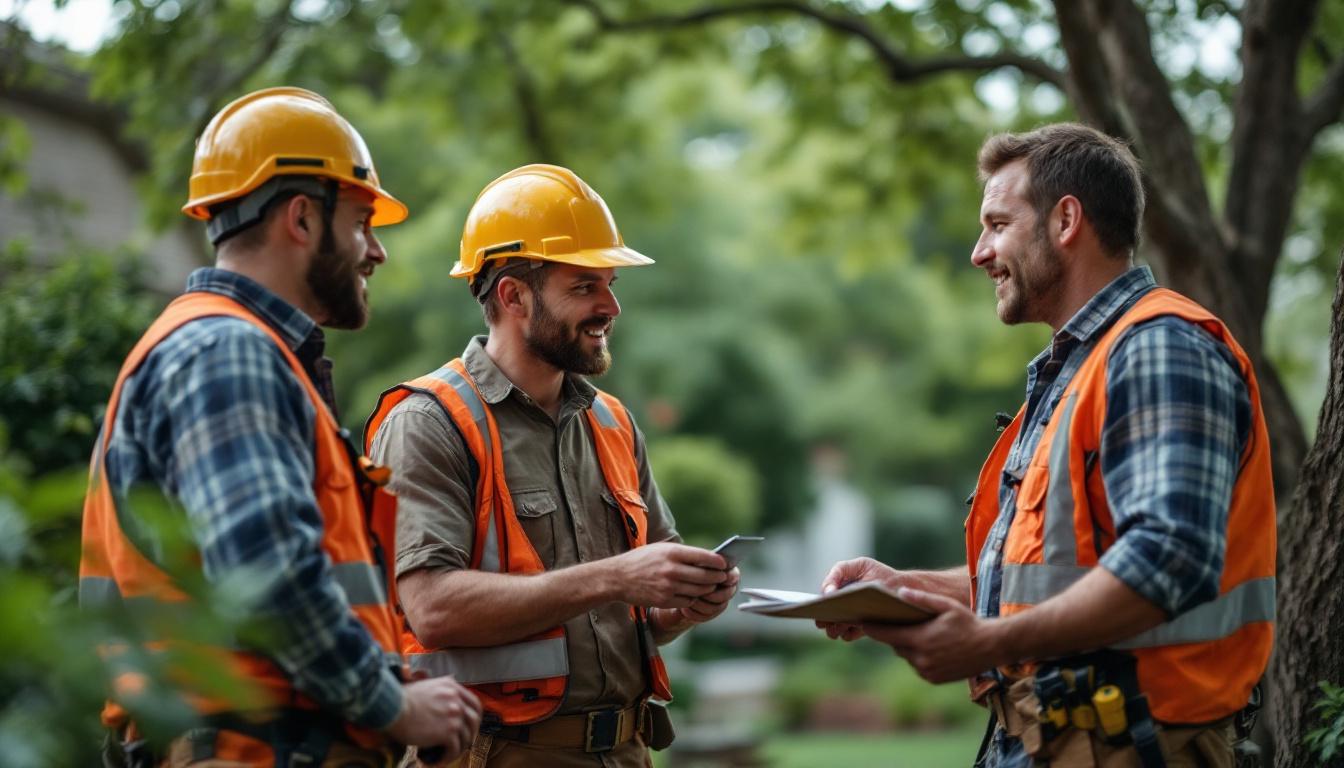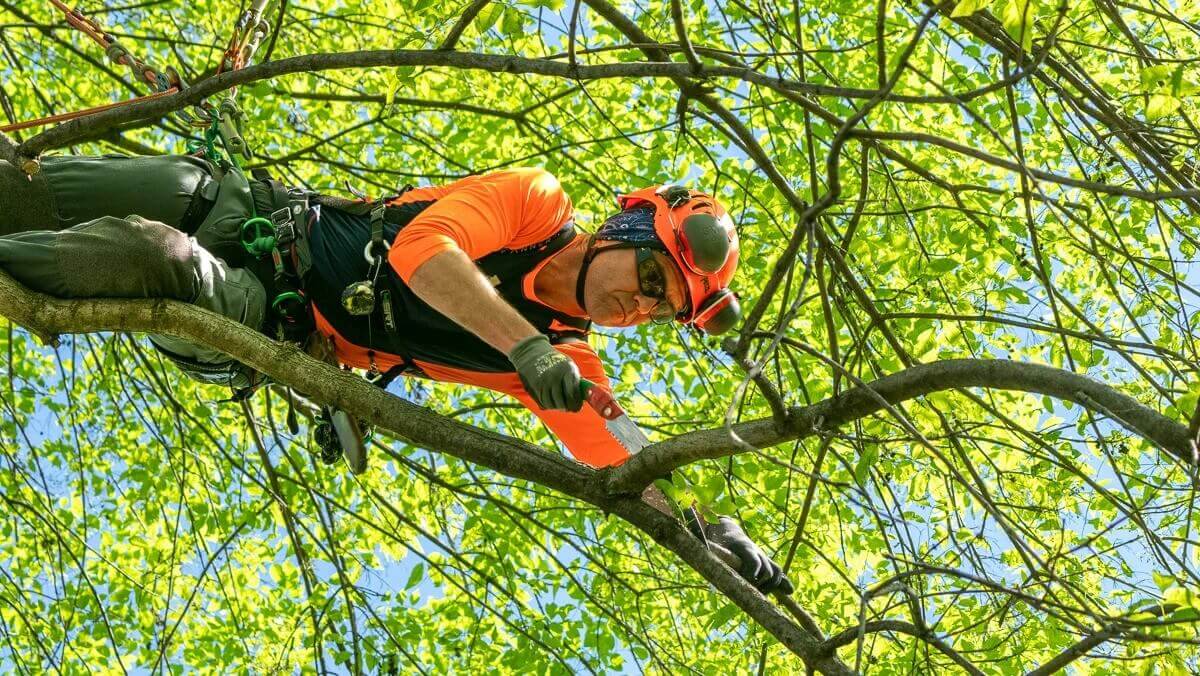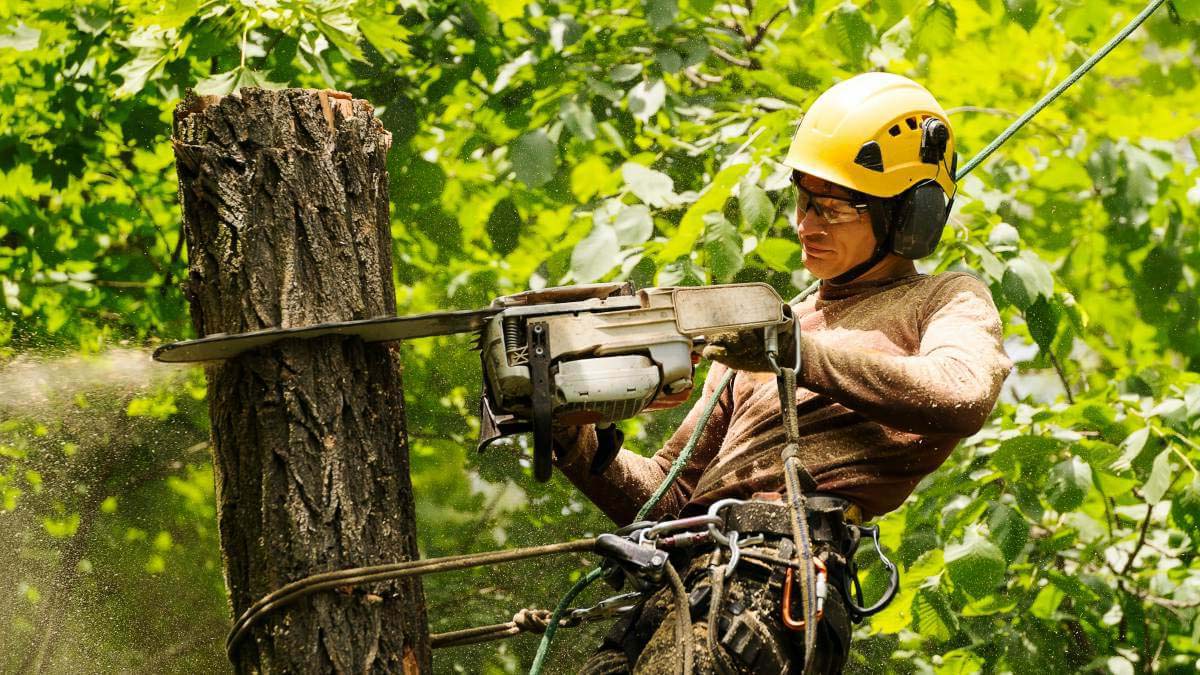What Are The Signs That Indicate A Tree Might Be Unsafe Or Pest-Infested?
How Do Arborists In Castle Hill Inspect Trees For Safety And Health Risks?
Root system evaluation forms a critical component of arborist evaluation Castle Hill services. Specialists examine the soil around the base for heaving, cracks, or exposed roots that indicate instability. They assess soil compaction, drainage patterns, and nutrient levels through testing.
Visual canopy inspection reveals branch dieback, unusual growth patterns, or epicormic shoots that signal stress. Arborists document lean angles, measure trunk circumference, and photograph concerning areas to track changes over time and recommend appropriate interventions.
Why Is Early Detection Of Tree Decay And Dead Wood Crucial?
How does decay compromise a tree’s structural strength?
Decay progressively eats away at a tree’s internal wood fibres, destroying the structural support that keeps it upright. The process creates hollow cavities and soft spots that cannot bear the tree’s weight during storms or high winds. Arborist Castle Hill professionals identify these weaknesses before catastrophic failure occurs, protecting homes and families from sudden collapse.
What dangers do dead branches present to property owners?
Dead branches lose their natural flexibility and become brittle, making them prone to snapping without warning. A falling limb can:
- Crush vehicles or damage roofing
- Injure people below
- Strike power lines causing outages
- Block driveways and pathways
Which preventative actions reduce tree hazard risks?
Early detection tree decay allows arborists to implement targeted solutions before problems escalate. Strategic pruning removes compromised limbs whilst preserving the tree’s health and appearance. When decay has progressed too far, controlled removal eliminates the threat entirely. Regular inspections catch dead wood risks early, enabling cost-effective interventions that prevent emergency situations requiring urgent, expensive responses.
What Role Do Pest Infestations Play In Compromising Tree Safety?
Pest infestation effects directly undermine tree structural integrity by creating internal cavities and weakening load-bearing wood. Insects bore through bark and sapwood, disrupting nutrient transport and creating entry points for disease pathogens.
Common tree pests Castle Hill residents encounter include:
- Borers – tunnel through trunk and branches, leaving sawdust-like frass
- Termites – hollow out internal wood whilst leaving outer bark intact
- Psyllids – cause leaf distortion and premature defoliation
- Scale insects – weaken trees by feeding on sap
The tree safety hazards multiply as pest colonies expand. Infested trees lose their ability to compartmentalise damage, leading to progressive structural failure. Branches become brittle and prone to sudden breakage, particularly during storms or high winds.
Visible indicators include unusual holes in bark, sticky honeydew residue on leaves, premature leaf drop, and the presence of insect casings. Woodpecker activity often signals borer infestations beneath the surface. Castle Hill arborists use specialised detection methods to identify hidden pest damage before external symptoms become severe.
How Can Changes In Leaf Condition Signal Tree Health Problems?
Leaf discoloration and wilting often appear before other visible symptoms of tree decline. Yellowing leaves outside autumn months, brown spots, premature leaf drop, or wilted foliage indicate underlying issues requiring immediate attention from Castle Hill arborists.
Environmental stress versus pest damage:
- Drought stress typically causes uniform browning across the canopy
- Nutrient deficiencies create specific patterns like yellowing between leaf veins
- Pest damage produces irregular holes, stippling, or sticky residue on leaf surfaces
- Disease infections manifest as distinct spots, blotches, or powdery coatings
Arborists examine leaf condition changes alongside bark inspection and soil testing to determine root causes. Spring and summer provide optimal monitoring periods when trees display active growth. Deciduous trees showing leaf problems during peak growing season warrant professional assessment, as healthy specimens maintain vibrant green foliage throughout these months. Castle Hill’s climate patterns influence normal leaf behaviour, making local expertise essential for accurate diagnosis of tree health symptoms.
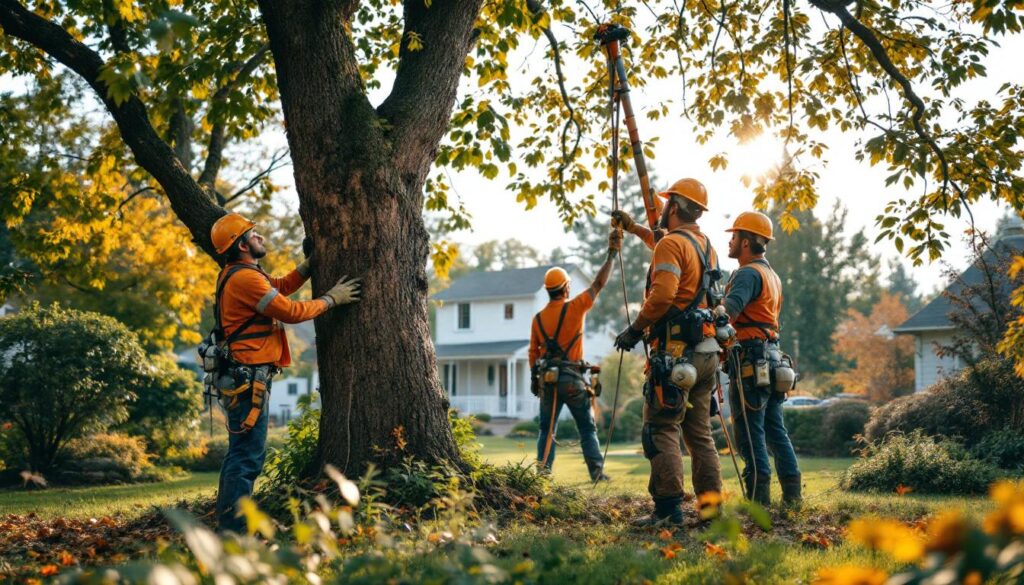
How Do Root System Issues Affect Tree Safety Near Homes?
Root system damage creates serious structural risks when tree roots grow too close to residential properties. Invasive roots penetrate foundations through small cracks, expanding as they grow and causing significant structural weakening. Underground pipes, particularly older sewer lines, become compromised when aggressive roots seek moisture sources and break through joints.
Property owners should watch for specific indicators of foundation impact trees create:
- Cracks appearing in walls or concrete slabs
- Uneven flooring or doorframes that no longer close properly
- Exposed roots surfacing near building perimeters
- Slow-draining plumbing or recurring blockages
- Soil subsidence around the property base
Arborist Castle Hill how to identify unsafe or pest infested trees early includes comprehensive root zone evaluations. Professional sewer line problems roots assessments use specialized equipment to examine underground growth patterns without excavation. Qualified arborists identify which species pose the highest risk based on their root architecture and proximity to structures, preventing costly damage through strategic management interventions.
What Preventative Maintenance Practices Help Keep Trees Healthy And Safe?
Tree maintenance Castle Hill services focus on proactive care strategies that address potential hazards before they escalate. Regular pruning removes dead, diseased, or structurally weak branches that could fall during storms, whilst simultaneously encouraging healthy growth patterns and improving air circulation through the canopy.
Pruning benefits extend beyond safety, as strategic cuts redirect the tree’s energy towards stronger limbs and promote balanced development. Arborists identify crossing branches, narrow crotch angles, and overextended limbs during routine assessments.
Soil analysis for trees provides critical data about nutrient deficiencies, pH imbalances, and compaction issues affecting root health. Testing results guide precise fertilization programmes that strengthen trees against disease and environmental stress without causing excessive growth.
Professional arborists develop customized maintenance schedules based on:
- Tree species and age
- Site conditions and exposure
- Previous health concerns
- Seasonal growth patterns
These tailored approaches prevent recurring problems such as pest infestations, structural weaknesses, and premature decline through consistent monitoring and targeted interventions.
When Is Tree Removal Necessary To Ensure Safety?
Tree removal reasons become clear when a tree poses immediate danger to people or property. Dead trees with brittle branches, diseased specimens showing extensive decay, or trees leaning more than 15 degrees toward structures require prompt removal. Structural cracks in the trunk, root damage affecting stability, or severe pest infestations that compromise integrity are additional indicators.
Hazardous trees removal Castle Hill professionals follow strict protocols during extraction. Arborists section large trees from top to bottom, using rigging systems to control each piece’s descent. They establish exclusion zones around the work area and deploy spotters to monitor surroundings throughout the operation.
Safe tree disposal involves protecting adjacent vegetation and structures through strategic planning. Arborists position drop zones away from gardens, fences, and buildings whilst using protective barriers for nearby plants. Ground crews clear debris immediately, and stump grinding eliminates tripping hazards. Specialists assess underground utilities before beginning work, preventing damage to sewer lines and electrical cables during root extraction.
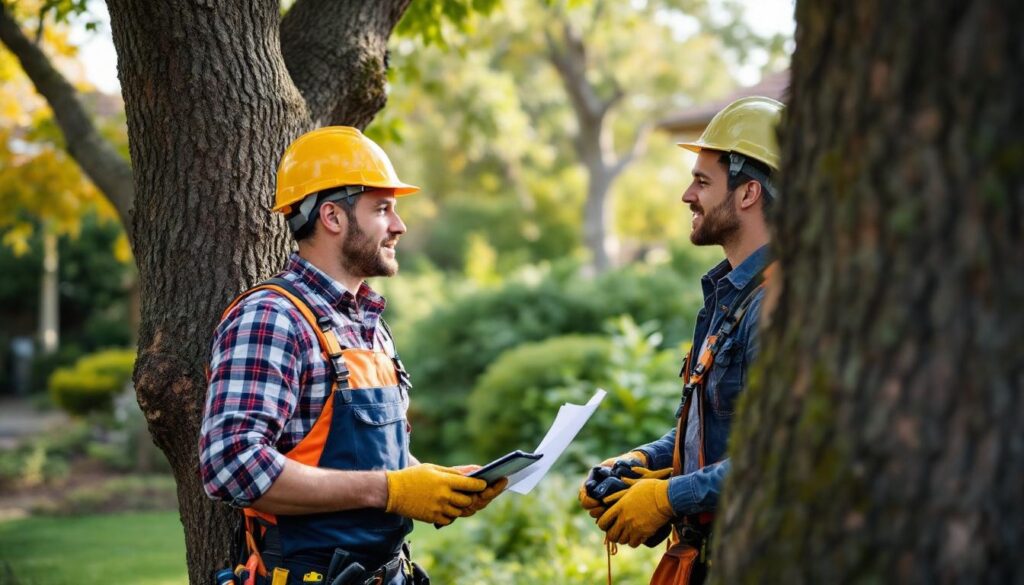
How Do Arborists Provide Customized Solutions For Tree Health Management?
Customized arborist plans begin with comprehensive inspection findings that identify specific issues affecting each tree. Professional arborists in Castle Hill analyse decay patterns, pest activity, structural weaknesses, and environmental factors to create tailored strategies addressing individual tree needs.
Tree health management Castle Hill services integrate multiple approaches:
- Pruning schedules targeting diseased or hazardous branches
- Treatment protocols for pest infestations using appropriate pesticides or biological controls
- Soil amendments based on analysis results to improve nutrient availability
- Removal recommendations when trees pose irreversible safety risks
Cost factors vary depending on tree size, location accessibility, proximity to structures or power lines, and the complexity of required interventions. Larger trees near buildings typically require specialised equipment and additional safety measures, increasing service expenses.
Professional tree care services adapt strategies as trees respond to treatment. Arborists monitor progress through follow-up inspections, adjusting care plans to ensure optimal outcomes. This responsive approach maximises the effectiveness of Arborist Castle Hill how to identify unsafe or pest infested trees early interventions whilst managing client budgets efficiently.
Related : Arborist St Ives how to safely prune overgrown branches without damage
FAQs About Arborist Castle Hill Services
They assess tree health, identify unsafe or pest-infested trees, and implement solutions to protect property and people.
2. How can I tell if a tree is unsafe or infested?
Look for signs like cracks in bark, fungal growth, bore holes, sawdust, yellowing leaves, and sparse foliage.
3. How do arborists inspect trees for risks?
They use visual checks, resistograph testing, sonic tomography, increment borers, root evaluations, and canopy inspections.
4. Why is early detection of tree decay important?
Early detection prevents structural failures, protects property, and avoids costly emergency removals.
5. What are the dangers of dead branches?
Dead branches are brittle, prone to snapping, and can damage property, injure people, or interfere with power lines.
6. How do pests affect tree safety?
Pests weaken internal wood, bore holes, and spread disease, increasing the risk of branch breakage and structural failure.
7. How do changes in leaves indicate tree health problems?
Yellowing, wilting, brown spots, or irregular leaf damage can signal drought stress, nutrient deficiencies, pest damage, or disease.
8. What preventative maintenance keeps trees safe?
Regular pruning, soil testing, fertilization, and tailored care plans help maintain tree health and prevent hazards.
9. When is tree removal necessary?
Removal is required for severely decayed, diseased, leaning, or pest-infested trees that pose immediate danger to people or property.

